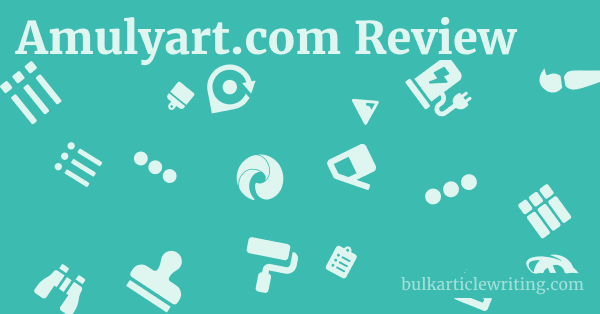
Understanding how interior designers calculate their costs and fees is crucial for any client embarking on a design project.
Read more about amulyart.com:
Amulyart.com Review & First Look
Amulyart.com Features
Amulyart.com Pros & Cons
Is Amulyart.com Legit?
Is Amulyart.com a Scam?
Amulyart.com provides a comprehensive explanation of the typical methods used in the industry, which is a significant plus for transparency.
This detailed breakdown empowers clients to better understand quotes and ensures they can budget effectively without unexpected surprises.
Generally, designers employ a combination of structures, often tailored to the project’s scope, complexity, and client preferences.
|
0.0 out of 5 stars (based on 0 reviews)
There are no reviews yet. Be the first one to write one. |
Amazon.com:
Check Amazon for How do Interior Latest Discussions & Reviews: |
The more clearly a designer communicates their fee structure, the more trust is built with the client.
Common Fee Structures for Design Services
Interior designers typically utilize a few core models to charge for their services, which can sometimes be combined depending on the project.
- Hourly Rate: This is one of the most straightforward methods, where the designer charges for the actual hours worked on a project.
- Application: Ideal for consultations, small projects, design advice, or when the scope is not fully defined initially.
- Range: As Amulyart.com notes, this can vary significantly from $50 to $500+ per hour, depending on the designer’s experience, reputation, and location.
- Pros: Clients pay only for the time spent, suitable for flexible projects.
- Cons: Costs can escalate if the project scope expands or if there are unexpected complexities. requires trust in the designer’s time management.
- Flat Fee / Fixed Fee: A predetermined, all-inclusive price for the entire project, agreed upon before work begins.
- Application: Best for projects with a clearly defined scope, deliverables, and timeline.
- Calculation: Based on estimated hours, square footage, complexity, and the specific design elements required. Amulyart.com gives examples of package deals for 2BHK/3BHK flats, which fall under this category.
- Pros: Budget certainty for the client. clear expectations.
- Cons: Less flexible if the client significantly changes the scope. designers might build in a buffer for unforeseen issues.
- Percentage of Project Cost: The designer charges a percentage of the total cost of the project (e.g., construction, furnishings, materials).
- Application: Commonly used for large-scale renovations, new builds, or projects with extensive material procurement.
- Range: Typically ranges from 10% to 30%, as indicated by industry standards and mentioned by Amulyart.com.
- Pros: Aligns the designer’s fee with the overall project value. transparent for large budgets.
- Cons: The designer’s fee increases if the client opts for more expensive materials or finishes, which might sometimes create a perception of misaligned incentives.
- Cost-Plus or Markup on Purchases: The designer charges the client the wholesale price for furnishings and products, then adds a markup.
- Application: Common for procurement of furniture, fixtures, and equipment (FF&E).
- Markup Range: Often 10% to 35% on wholesale prices.
- Pros: Clients benefit from trade discounts. designer is compensated for sourcing and managing procurement.
- Cons: Requires trust that the designer is providing fair wholesale pricing. transparency regarding the markup percentage is crucial.
Additional Cost Considerations
Beyond the primary fee structures, clients should be aware of other potential charges that might be incurred during a design project.
- Consultation Fees: Many designers charge for initial meetings or design assessments, especially if they involve significant time or preliminary conceptual work.
- Travel Fees: If the project site is far from the designer’s office, charges for travel time or expenses may apply.
- Revisions/Changes: While a certain number of revisions might be included in the flat fee, extensive changes requested by the client after design approval may incur additional charges.
- Project Management Fees: For overseeing construction, coordinating with contractors, and managing the installation process, a separate project management fee might be levied.
- Retainer: An upfront deposit paid to secure the designer’s services. This amount is typically credited towards the final bill.
- 2D and 3D Design Costs: Some designers charge separately for these, as Amulyart.com mentions a potential ₹40 per square foot for both. However, Amulyart.com clarifies that they often include design services as part of their package.
Factors That Influence the Final Cost
The total cost of an interior design project is a dynamic figure influenced by several key variables, making each project unique in its pricing.
- Project Size & Complexity: Larger spaces (e.g., a full house vs. a single room) and more intricate designs (e.g., custom millwork, complex lighting plans) inherently cost more due to increased labor, materials, and design time.
- Level of Customization: Bespoke furniture, custom built-ins, and unique finishes will significantly increase costs compared to off-the-shelf items or standard solutions.
- Location of the Project: Geographic location impacts material costs, labor rates, and designer fees. Design services in major metropolitan areas are typically more expensive than in smaller towns.
- Client’s Desired Timeline: Expedited projects that require designers and contractors to work overtime or prioritize a single client can incur premium charges.
- Designer’s Experience & Reputation: Highly experienced, renowned designers often command higher fees due to their proven track record, unique vision, and demand for their services.
- Quality of Materials & Finishes: The choice between budget-friendly materials (e.g., laminate) and premium options (e.g., natural stone, high-end veneers) has a direct and substantial impact on the overall project cost.

Leave a Reply